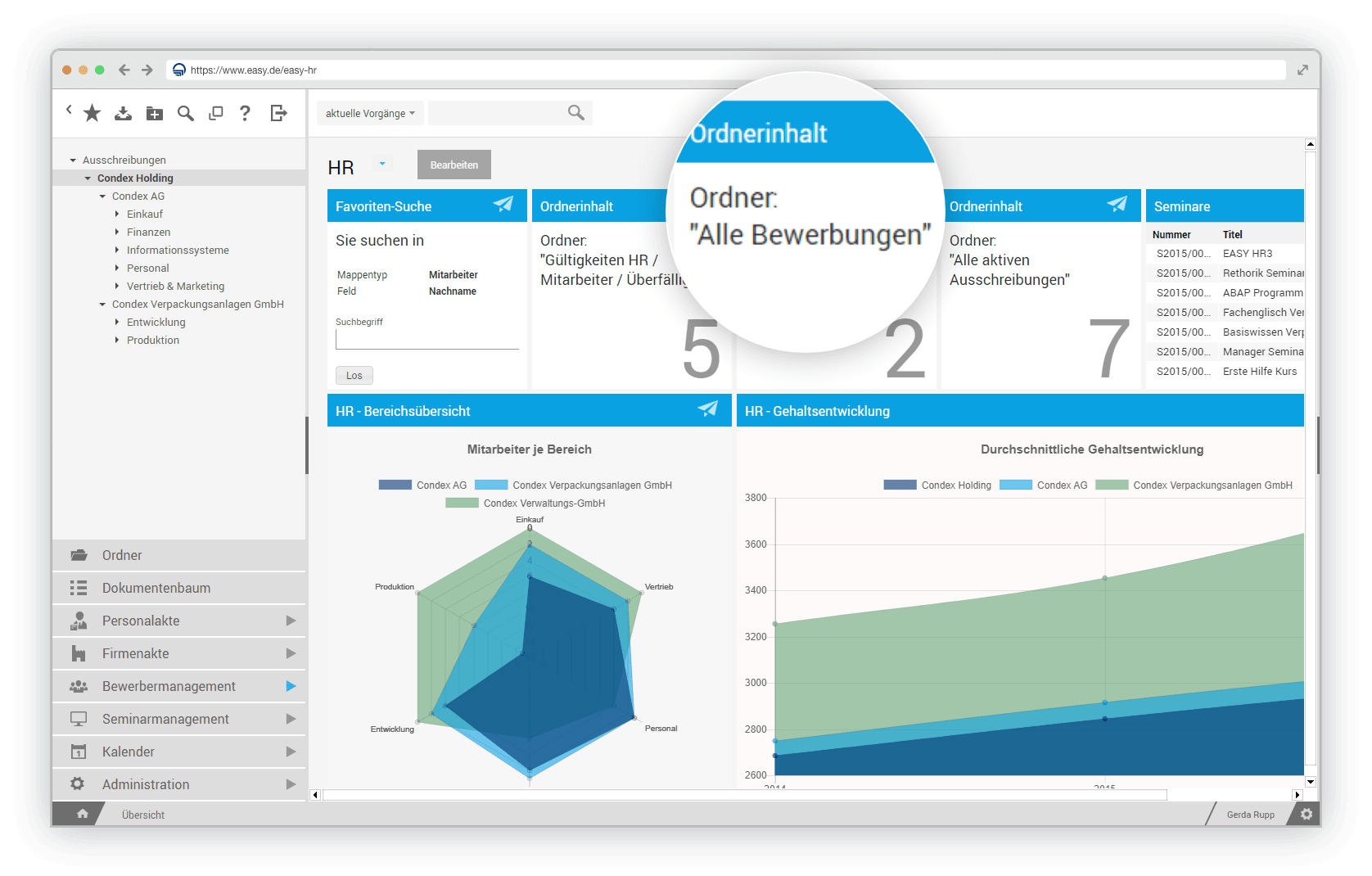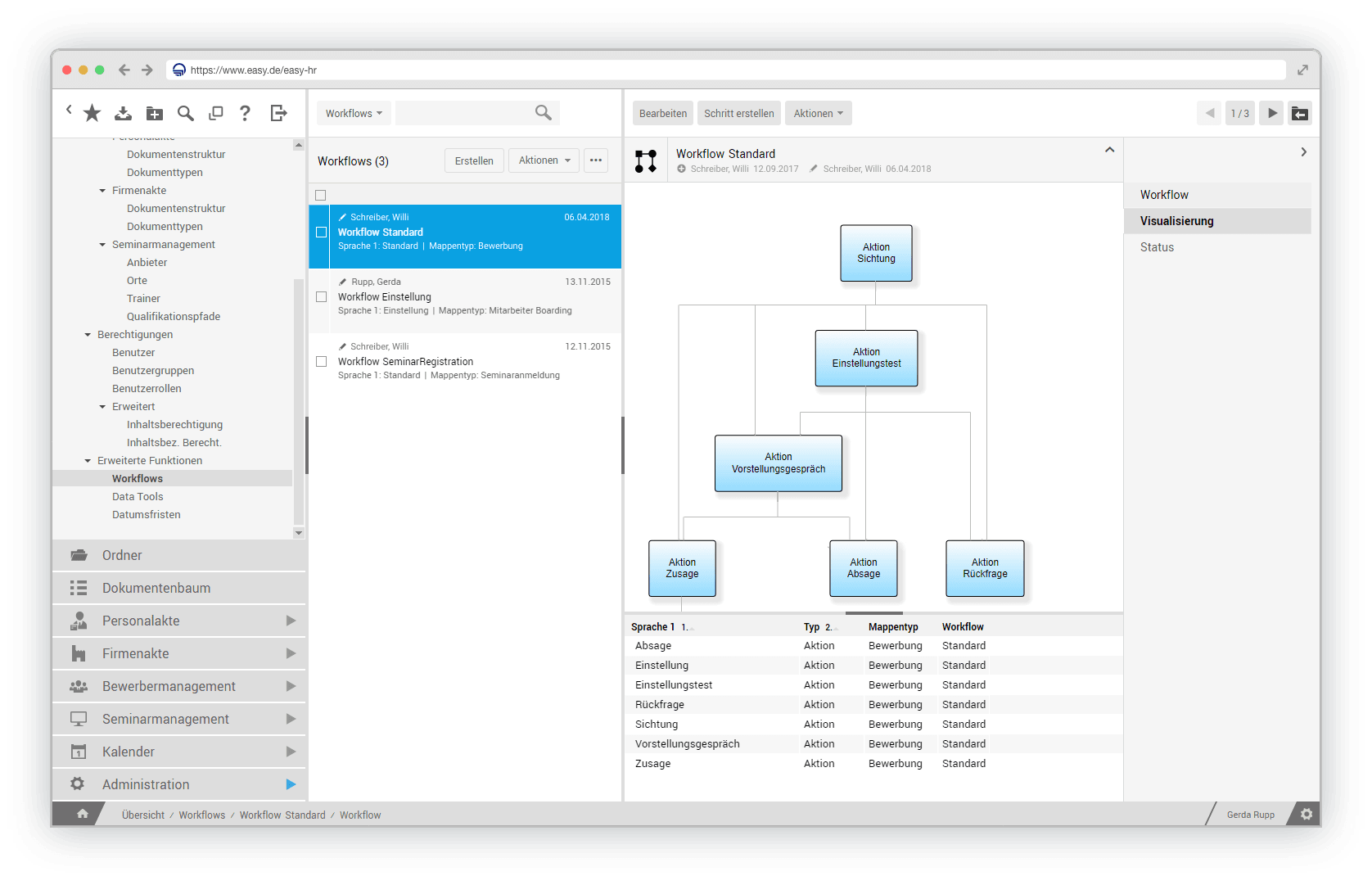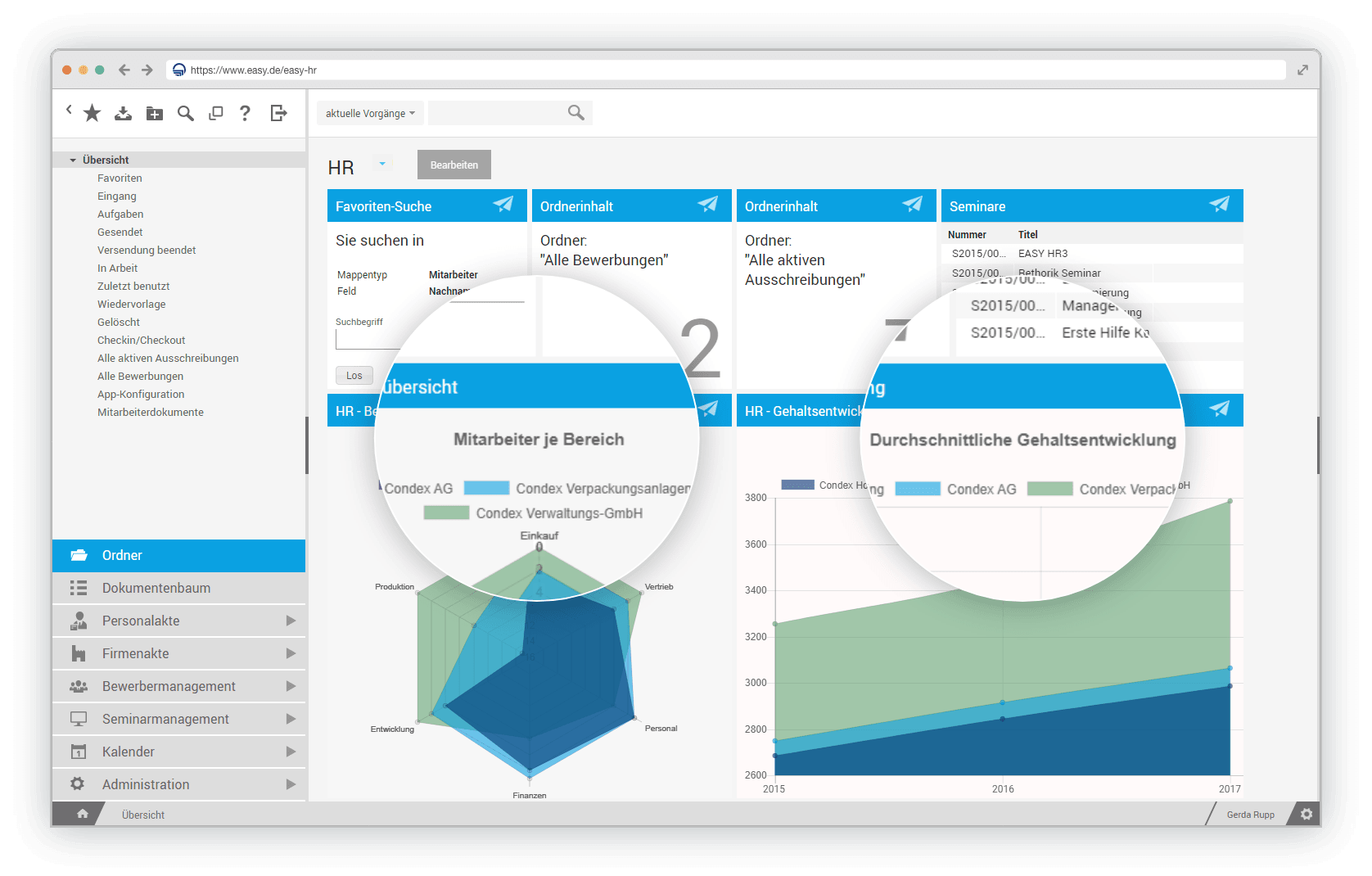BLOG
Optimizing the Recruiting Process: How to Achieve Recruiting 4.0, Step by Step
The HOW is crucial to the recruiting process. In this blog, we will show what is important in the recruiting process, how this is changing and what you can do to find the best talent quickly.
Despite the increasing digitalization of business and society, the recruiting process remains largely unaffected, because the basic steps have stayed the same: personnel administrators investigate and recognize the need for new employees in the company, they post jobs, look at applications and hire new employees. So far, so good. But the HOW is crucial to the recruiting process. The so-called “War for Talent” has been haunting HR departments for some time. Demographic change, coupled with new technologies and applicants’ changed communication habits, is increasing the demands on recruiters. In this blog, we will show what is important in the recruiting process, how this is changing and what you can do to find the best talent quickly.
What is the flow of the recruiting process?
- Strategic workforce planning: What employees with what qualifications are in which positions, and where are there bottlenecks? What skills need to be promoted in order to ensure a secure future for the company? Those are questions which HR employees pose at the start. Recruiters must manage the core business and promote innovation at the same time.
- Profile formulation: Personnel administrators define the technical and personal competencies, as well as the content orientation of a position and the salary range.
- HR recruiters then select the channels through which the position will be promoted. Company website, job exchanges, or social media recruiting via Xing – the choice of the right channels is crucial for reaching the respective target groups.
- Administration in applicant management: This step usually includes screening, preselection, interviews and, if applicable, aptitude tests.
- In the final step, the contract documents are created. The new hire finishes with a coordinated onboarding process of the new employee. Incidentally, applicant information may only be retained – for example, to develop an applicant pool – following the conclusion of the application process if this is expressly permitted by the applicants. Otherwise, personal information from the application process must be deleted after no later than three months.
How does Recruiting 4.0 change the recruiting process?
The term Recruiting 4.0 or e-recruiting implies that a previous development has taken place. But what did the recruiting process look like before, and what are the characteristics of Recruiting 4.0? Is it just a buzzword, or is this a lasting change in the recruiting process? The basic recruiting process steps from workforce planning to the hiring of someone haven’t changed, but target groups, communication channels and recruiting requirements have. Factors such as the employer brand are gaining importance.
Logically, the recruiting process began with Recruiting 1.0. At the time, recruiters looked for applicants in analog through classified ads in newspapers. In that period, it was primarily entry level workers who were used as recruiters, because the job was strongly oriented toward operations and less toward strategy. There was no mention of personnel marketing. In Recruiting 2.0, the staff search began to take place via online job exchanges. In Recruiting 3.0, the employer brand finally came to the fore as an important element in the recruiting process. Personnel marketing was born and implemented. Recruiters began using active sourcing, that is the active and individual addressing of potential candidates, although still very limited.
Recruiting 4.0: User focus
Finally in Recruiting 4.0, everything is about the individual applicant. As in sales and marketing, the focus here is absolutely on the user. Thanks to a shortage of skills and the associated strong competition among companies for talent, the balance of power is changing. While earlier recruiters were “gatekeepers,” and applicants were the ones who wanted something and had to ask for it, companies today increasingly see themselves in the position of having to explain very precisely why candidates should work for them. This strong user focus is one of the most important characteristics of HR 4.0.
Another point is the support of technology in the recruiting process. When it comes to addressing as many suitable candidates as possible, as constructively as possible, and to do it faster than the competition, it is vital to design the recruiting process in the company to be faster and more efficient through standardization and digitalization. Thus, it is a matter of using technology for user focus in the recruiting process.
Recruiting 4.0: Your Strategy in the War for Talent
How Recruiting 4.0 helps employers to find and attract the best candidates. Recruiting 4.0 is the answer to digital reality in personnel management. Learn how data-driven approaches and customized applicant management enable a completely new recruiting process.
The recruiting process in the digital transformation – More appearance than substance
According to a Xing study in 2018, the reality in German companies often looks very different. While larger companies have already achieved HR 4.0 and are using, for example, one-click applications, small and mid-sized companies would like to implement it, but have not. Of the 101 companies surveyed, most believe that digital processes in recruiting offer the best possible opportunities for attracting suitable employees, at the same time the implementation of digital recruiting software is often not very advanced in the company. The discrepancy can be explained by the fact that executives do not assess the importance of optimizing recruiting processes as highly as HR administrators do, and so the technological development in HR is more blocked than promoted.
Yet the HR department and above all recruiting are one of the most important elements in the implementation of company strategy, because employees are the capital for company success.
Checklist: How to digitize the recruiting process
The importance of digital recruiting processes is recognized, but there is still a lot of room for its implementation. It makes no sense to just start digitalizing. HR administrators should consider what they need and how best to support the company objectives with it. Automated HR processes need to be combined with a sensible digital candidate experience and to provide applicants with an intuitive application process. The most important issue for recruiters is speed. HR processes can be standardized and significantly accelerated through the use of application management software.
- Analyze and plan needs: For a successful implementation of the digitalization project, you should describe your requirements as specifically as possible. Bring all stakeholders aboard – especially including the IT department, and invest enough time in the analysis of your HR processes. Define your objectives and develop a plan for implementation.
- Focus on the user experience: In selecting the right recruiting software, pay attention to good usability, which increases acceptance in the members of your team who also use it.
- Simple, recurring processes: An important success factor in digital recruiting is getting started via a lean and tangible process such as recruiting, which you can implement quickly and control well with easy hr. If HR departments immediately recognize the benefits of a digitized process, acceptance grows, and the effort required for change management automatically decreases.
- Rely on data-driven recruiting: Likeability is a key factor – even subconsciously. If only two candidates are left, that is all right. Before that, especially when a lot of applications need to be carefully preselected and errors in judgment must be avoided, evidence-based processes such as aptitude tests can help. These are quite cost-effective as online tests for a wide variety of jobs and hierarchy levels, simple and in compliance with data protection laws.
After all, technology is a means to an end, and the recruiting process is about working with people. Recruiters are more and more becoming communicators, because they represent the first contact between a potential future employee and the company.
Find and convince the best professionals recruiting management software
From recruiting to assessment – easy, quick, effective.
Job ads and applicants can be efficiently managed and monitored with the Job Advertisement and Applicant Management in the easy hr. The entire recruiting process is controlled from the software, tasks are assigned to the process participants, and their completion is monitored. Applications are automatically compared to the profile of the job posting, and an initial applicant ranking is created, which is then forwarded to the appropriate department for detailed examination.
Your advantages
The applicant market has changed noticeably during the last few years. Digital transformation, lack of specialists and war for talents define and complicate the search for suitable employees. Modern, software-based applicant management adapts to these demands. As an HR officer, you would like to find new talent quickly and efficiently. But applicants don’t dally either – they expect quick feedback and good structures in the application process. Give your applicants what they deserve.
- Transparent control and monitoring of the applicant management
- Fast and flexible processes for the HR department
- Reliable fulfillment of deadlines
- Better results in the war for talents by meeting the expectations of applicants in the application process
- Web-based access to ongoing applications, across locations and time
- A cloud-based solution with a flexible subscription model
The functions of our applicant management at a glance
practical dashboard
All the important information is compiled in one interface: the job postings at the organizational level, information on the postings, requirements for education and qualifications, the definition of the workflow, and the interfaces for submission to the linked job portals.

digital workflows
Preliminary comparison of the applicant’s target and actual skill profile and transparent progress administration with automated verification and approval processes from reception to refusal of the placement.

applicant process
An online application process via the company’s website allows a scoring system for applicants based on the requirements for the posting. An automatic ranking of the applicants is thus created, which simplifies your selection of suitable candidates tremendously. An automated workflow for onboarding processes is included as a template.

web-based
The employees in the HR department and the managers can access open and closed job postings and ongoing applications at any time. Thanks to web-based access, they can also do so from mobile devices while on the go.

The digital assessment center – so you make the right decision
How well do the applicants really fit in your company? Do they also bring the required competencies? Reading applications and résumés is one thing, but the application documents don’t always provide answers. Especially when you receive an abundance of applications, it is a good idea to resort to performance and competence tests for a preselection.
The easy Assessment Service tool in the applicant management system enables you to do just that, namely the quick implementation of placement tests, fully integrated into the digital application process. Of course, you pose the questions and tasks in the tests individually and tailored to the respective professional and target groups.
Custom online tests: quickly implemented, easily evaluated
Together with our customers, we develop the appropriate tests – be it achievement or personality tests – to discover the potentials of internal employees or verify the competencies of career beginners. We help you to place your personnel selection on a scientifically sound and legally compliant foundation.
- Clear advantages in applicant management
- Transparency and clarity regarding the competencies of your applicants
- Efficient results and evaluations save time
- Make a good decision and avoid subsequent costs from the “wrong” candidates